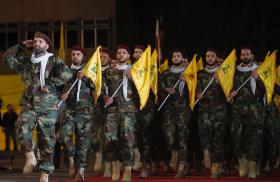

A relatively straightforward legal dispute could have geopolitical consequences.
In March, Saudi Arabia and Kuwait agreed to develop an offshore natural gas field about fifty miles off their coasts. No timeline was given for when work would start, but the move prompted outrage from Iran, which asserted that the field extends into its territorial waters and described the agreement as “illegal.” In response, Kuwait asserted that the area was “entirely a Kuwaiti and Saudi field.” Two weeks later, however, Saudi and Kuwaiti officials seemed to have second thoughts and invited Iran to hold negotiations to determine the field’s extent. But the issue remains sensitive.
The big question is whether the gas deposit is regarded as one or two fields. On its side of the Persian Gulf, Iran calls the field “Arash,” while Saudi Arabia and Kuwait call the portion in their waters “Durrah.” If it is just one field, then the question becomes how much of it is in Iranian waters. Many industry experts believe it is just one field, capable of producing a significant amount of gas as well as condensates (sold as oil).
Although Kuwait is a significant oil producer, it currently has to import gas for generating electricity—at times from sources as far away as the Caribbean, absurdly enough. Riyadh would likewise find Durrah gas useful for power generation, replacing oil that could more profitably be exported. Even Iran needs more gas, despite vying with Russia for the title of world’s largest gas reserves.
The dispute may be further complicated by the historical origins of the Saudi and Kuwait coastlines. When originally drawn by British imperial administrators, this area of the Gulf coast was left ambiguously designated as a “Neutral Zone” because of the migratory patterns and loyalties of the local Bedouin tribes. With the discovery of oil, the zone was partitioned between Saudi Arabia and Kuwait, but production revenue was shared. A degree of tension over this arrangement persists today.
Bilateral political friction has also reared its head at times. When de facto Saudi ruler Crown Prince Muhammad bin Salman visited Kuwait in 2018, the trip was abruptly curtailed for reasons never explained but widely attributed to Kuwaiti irritation with his style of diplomacy.
Durrah/Arash is far from being the first gas field that lies across sovereign boundaries, and international legal mechanisms for joint exploitation and revenue sharing in these situations are well-established. In the Gulf alone, Iran shares other oil and gas fields with Qatar, the United Arab Emirates, and Oman. Yet disputes resulting from such sharing arrangements are not always settled amicably: in 1990, for example, Saddam Hussein partly justified his invasion of Kuwait because he alleged (with some merit) that the country was over-producing from an oil field that straddled their shared border.
In the current context of concerns over global energy prices and Ukraine-related gas shortages, perhaps the most important takeaway from the dispute is this: even if the matter is resolved smoothly and expeditiously, production could not begin at Durrah/Arash for several years, and not without considerable development expenditures (an estimated $7 billion for Durrah alone). Given these circumstances, and in the interest of avoiding actions that might mistakenly exacerbate political sensitivities between the parties, Washington’s best approach may be to remain merely an observer at this point. Any revenue that Tehran might earn from the project is a long way off; in the meantime, the case gives key Gulf states an opportunity to have working relations with each other despite tensions.
Simon Henderson is the Baker Fellow and director of the Bernstein Program on Gulf and Energy Policy at The Washington Institute.



